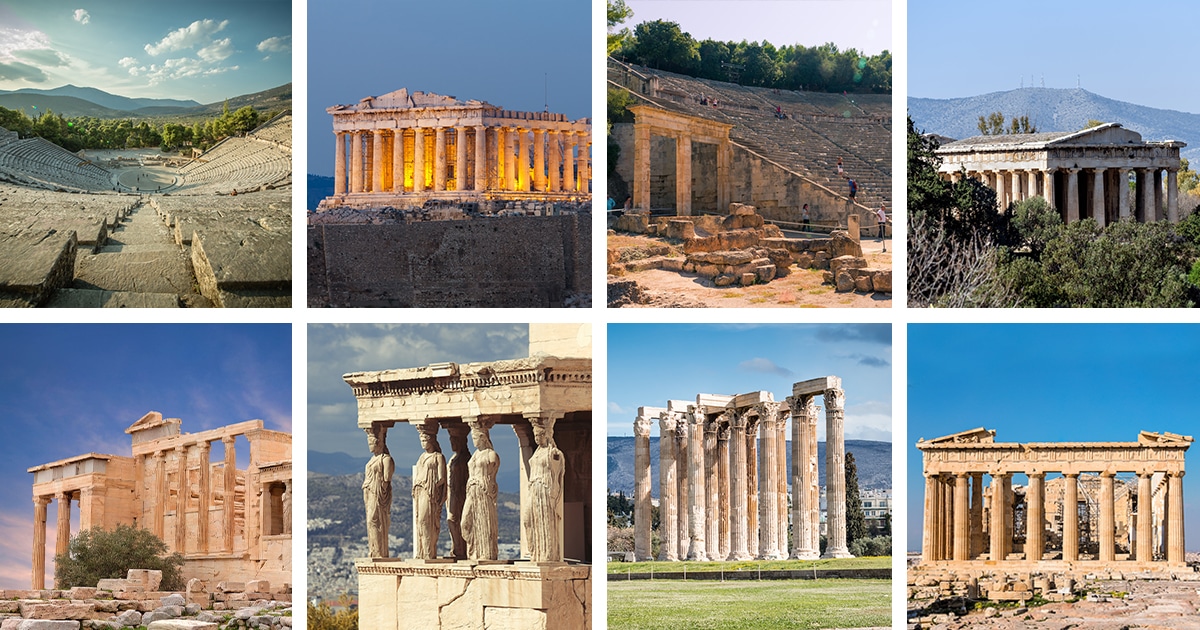
Left to right: Great Theater of Epidaurus, The Parthenon Aerial, Great Theater of Epidaurus Closeup, Temple of Hephaestus, Temple of Olympian Zeus Aerial, Porch of the Caryatids at Erechtheion Temple, Temple of Olympian Zeus, and the Parthenon
It is no secret that the Ancient Greeks left a lasting impact on the world. Ancient Greek architecture preceded some of the most iconic styles of design in the world. In fact, classical ideas about art and architecture continue to come back in style. It is often used to signify an important institution or government building.
Ancient Greek architecture includes a few types of buildings that defined culture and city life, including temples, hypostyle halls, open-air theaters, public squares, and many residential models. Though these works were created so long ago, much of the logic behind the acoustics and structural principles remain the same today.
In this article, we break down the common characteristics that define the architecture of Ancient Greece and introduce you to five of our favorite buildings designed in the style.
In this article, we break down the characteristics of Classical, or Ancient, Greek architecture and some of the best examples of the style.
Characteristics of Ancient Greek Architecture
Classical Order of Columns
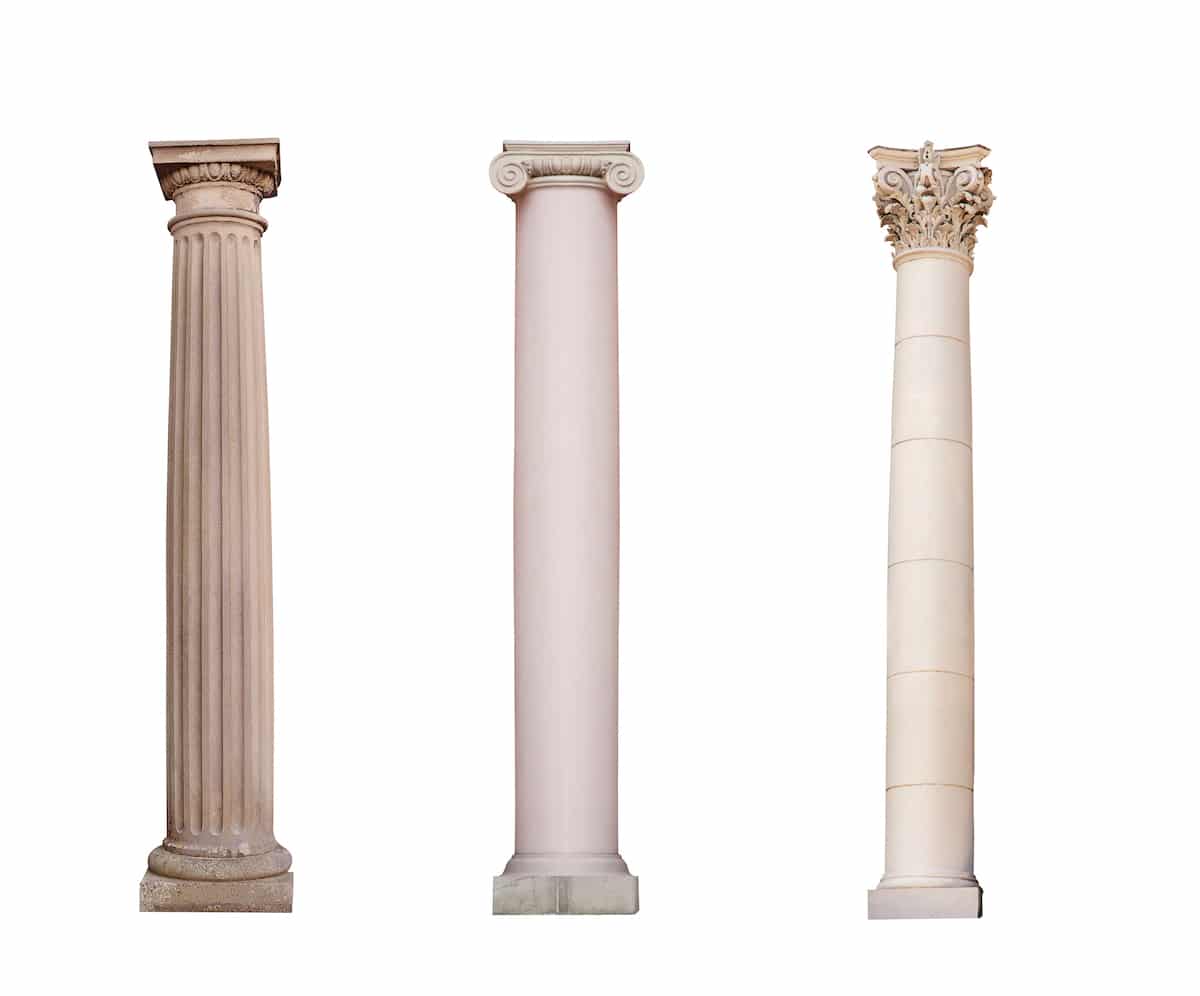
Porch of the Caryatids at Erechtheion Temple in Acropolis of Athens, Greece (Photo: Stock Photos from Tymonko Galyna/Shutterstock)
Ancient Greek buildings were often designed in three styles: Doric, Ionic, and Corinthian. The orders describe varying levels of ornamentation and differing proportions.
Doric — The Doric order was the first style developed and is the simplest of the three main orders. The column capital includes no ornamentation and the capital does not include a base. The most well-known use of the Doric order is in the Parthenon.
Ionic — The Ionic order was the second style developed and is more ornamental than the Doric order but less ornamental than the Corinthian order. The columns are far more slender than the Doric columns and include a running frieze of sculpture as opposed to the broken-up Doric frieze.
Corinthian — The Corinthian order was the last style developed and is the most ornamental of all orders. The most distinctive element of the Corinthian order is the elaborate capitals often featuring leaves or motifs from nature.
Symmetry
Much of Ancient Greek architecture focused on ordered beauty so columns, openings, and other elements were equally spaced in an overly symmetrical building.
Examples of Classical or Ancient Greek Architecture
The Parthenon

Parthenon Temple in Acropolis of Athens, Greece (Photo: Stock Photos from PNIKOL/Shutterstock)
The Parthenon is one of the most famous structures in the world and draws millions of visitors each year. It sits on the hill of the Acropolis in Athens and is often described as having distinctly spiritual qualities. The Parthenon was built in the 5th century BCE to honor the goddess Athena the Virgin, or Athena Parthenos, where this structure’s name originates.
Aside from its relevance in architectural history, the building is important because it is a symbol of democracy in Athens. Built as a celebration of the victory on Persians, the Parthenon is considered the ultimate example of the Classical Doric order. The ornamentation and details throughout the work are often cited as the highest quality of craft and architecture in Ancient Greece.
The Parthenon site was home to a long spiritual history that started before this structure with a “Pre-Parthenon” temple dedicated to the goddess Athena. Even after the Parthenon, as we know it, was built, it spent time as a Greek temple and treasury, a Christian church dedicated to the Virgin Mary, and a mosque. During this time, the structure endured damage and theft of the art within, but today still stands as an icon for Ancient Greek and classical architecture.
To learn more, read our article on 10 facts about the Parthenon.
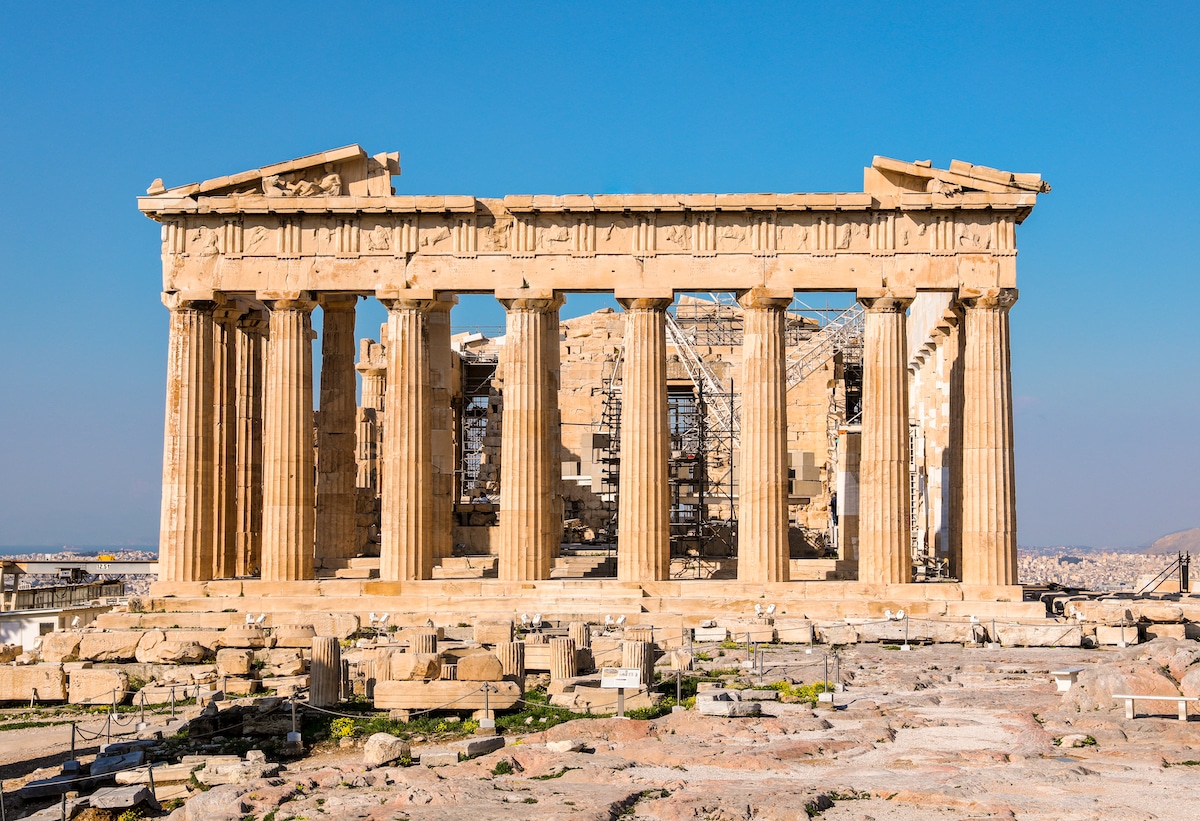
Parthenon Temple in Acropolis of Athens, Greece (Photo: Stock Photos from Victoria Kurylo/Shutterstock)
Temple of Olympian Zeus
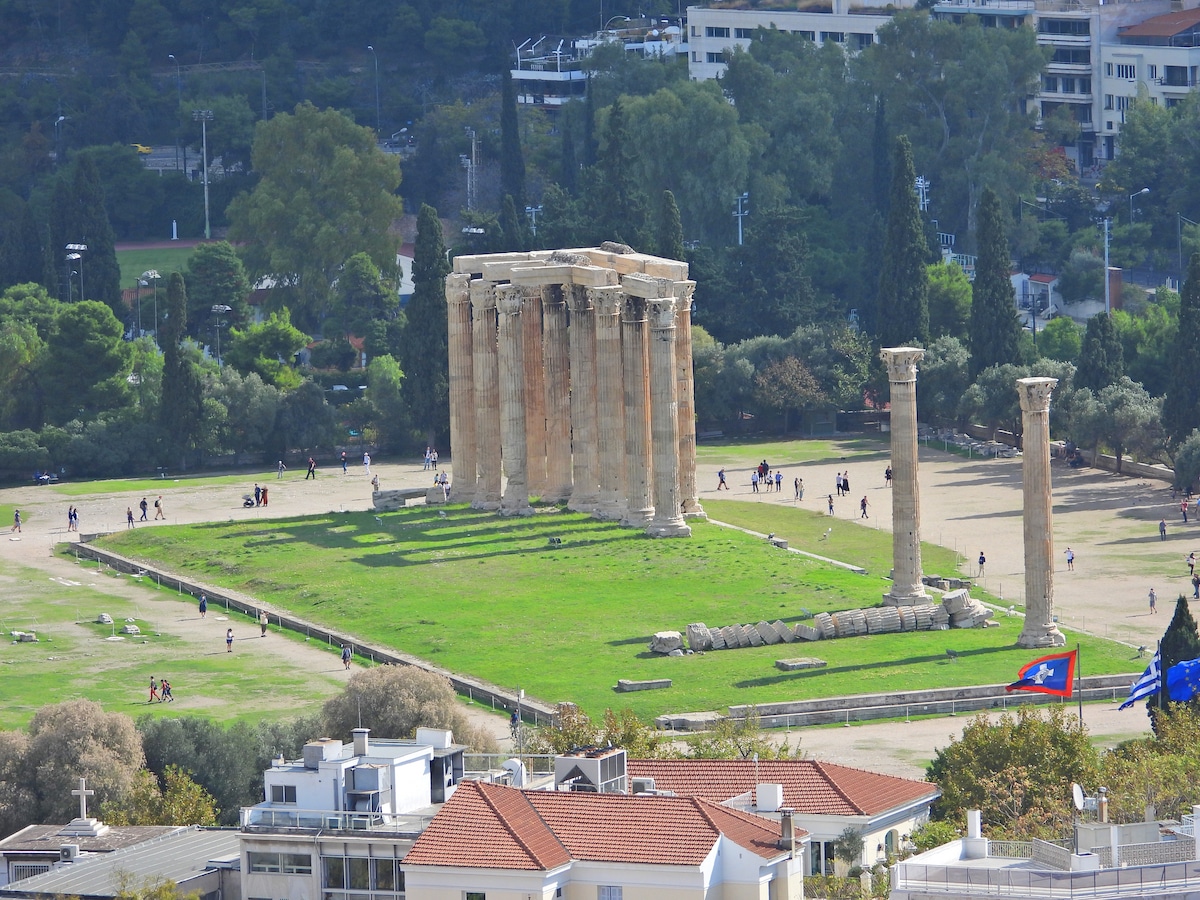
Temple of Olympian Zeus in Athens, Greece (Photo: Stock Photos from Aerial-motion/Shutterstock)
The Temple of Olympian Zeus, or the Olympieion, is known for its incredibly tall columns. It first began construction in the 6th century BCE and over the years was completed by many architects, some of who adjusted the design. The original plan featured a temple in the Doric order and made out of limestone. Political difficulties forced construction to halt for centuries.
When it began again, the temple was to be made in the Corinthian order—making it the first temple of this order—and constructed out of Pentelic marble. Yet again, the leader was unable to complete the temple, and construction was halted. It was only under Roman emperor Hadrian that the project was finally completed. The Temple of Olympian Zeus was made up of 104 columns each about 55 feet tall and a massive statue of Zeus.
The temple was damaged over the years by a sack of Athens, the spread of Christianity which stopped the worship of ancient gods, as well as Turkish occupation and storms. Though much of it was destroyed, 15 of the columns still stand and the Temple of Olympian Zeus is still one of the most incredible examples of ancient architecture.
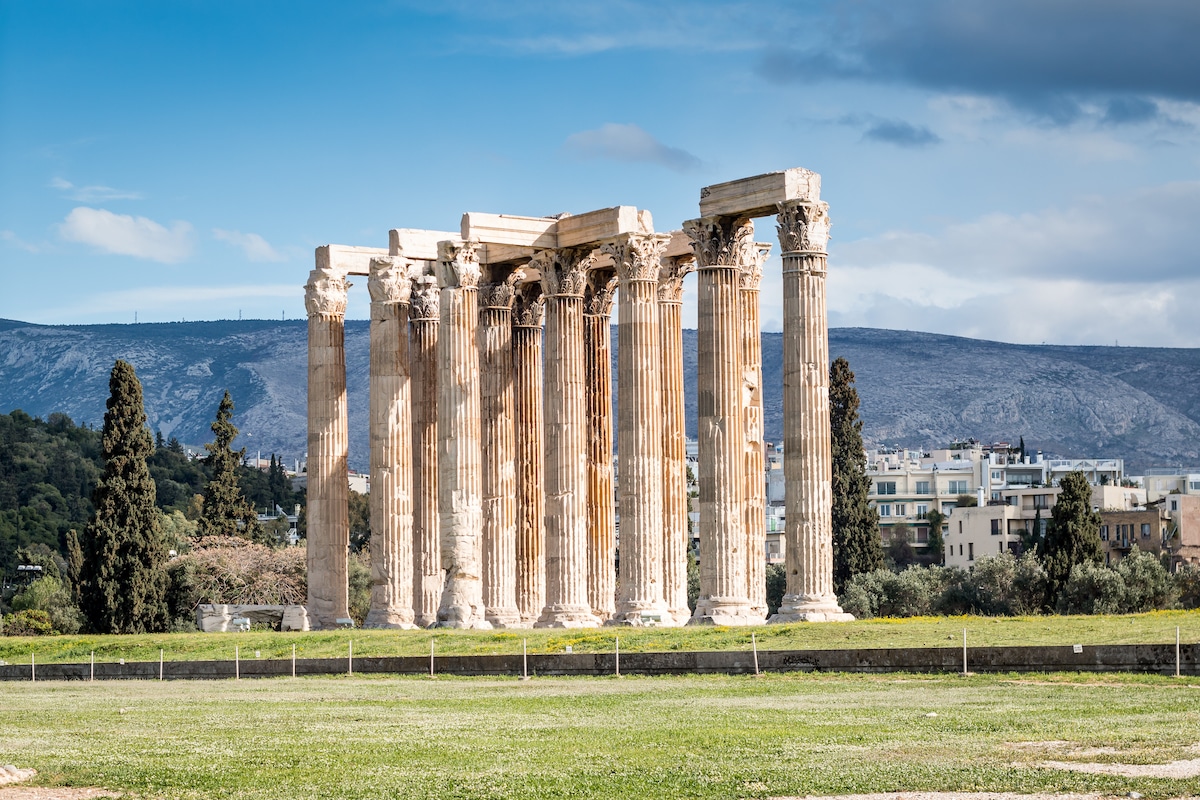
Temple of Olympian Zeus in Athens, Greece (Photo: Stock Photos from eyal granith/Shutterstock)
Erechtheion
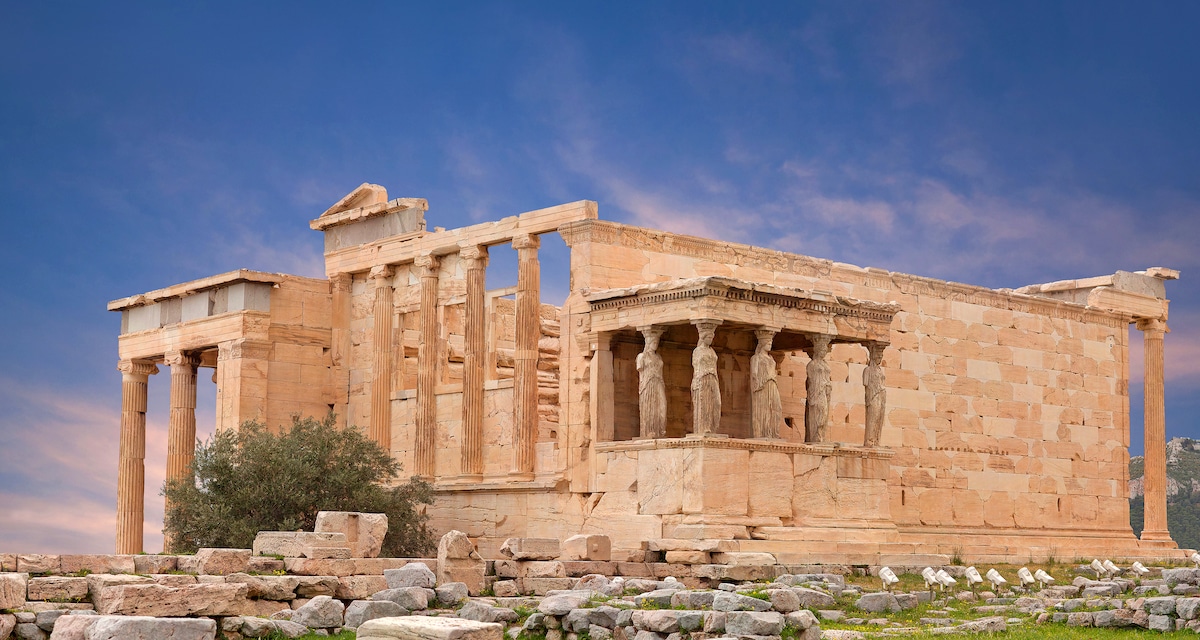
Erechtheion Temple in Acropolis of Athens, Greece (Photo: Stock Photos from Zzvet/Shutterstock)
The Erechtheion, or the Erechtheum, is an ancient Greek temple near the Acropolis of Athens, Greece. It was built from 421 to 406 BCE in honor of either the hero Erichthonius or the king Erechtheus, who you might remember from “The Iliad.” It was built by Phidias, a sculptor and mason who also worked on the Parthenon.
The Erechtheion was designed to house an ancient wooden statue of the goddess of Athena but was used for other spiritual purposes. It was built from white marble from Mount Pentelicus. The design itself was unusual for its lack of symmetry and its construction over a massive slope. Because of this, we will never be completely sure of the floor plan, but we are able to understand most major features of the structure.
One of the most iconic elements of ancient Greek architecture can be found in the Erechtheion: the Porch of the Maidens. This porch features six caryatids, or columns in the form of women, supported the impressive roof. Though beautiful, the porch was built for the pragmatic purpose of hiding a massive beam resulting from a major design change. These sculptural columns can now be found in both the British Museum in London and the New Acropolis Museum.
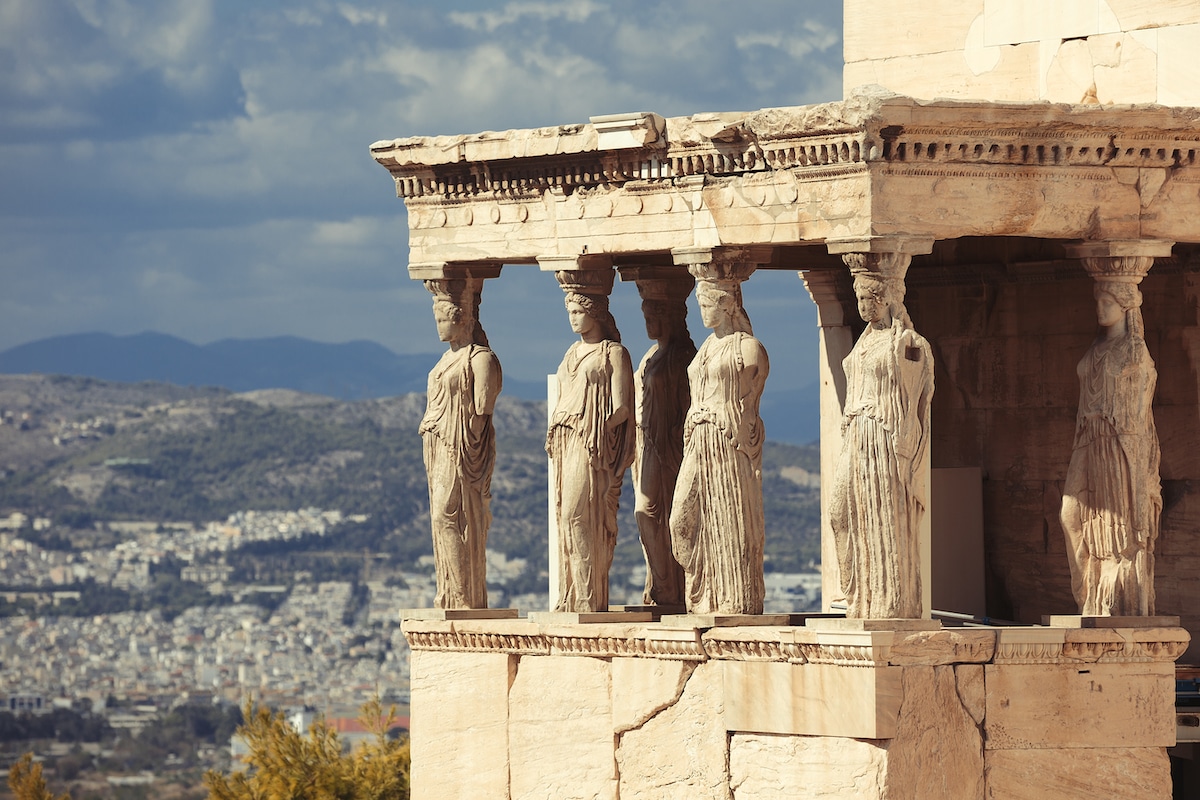
Porch of the Caryatids at ErechtheionTemple in Acropolis of Athens, Greece (Photo: Stock Photos from Anastasios71/Shutterstock)
Great Theater of Epidaurus

Great Theater of Epidaurus in Epidaurus, Greece (Photo: Stock Photos from Thevergori/Shutterstock)
It makes sense that the Great Theater of Epidaurus is considered the most famous theater of ancient Greece as it is probably the best-preserved. Built in 340 BCE by Polykleitos the Younger, this theater features incredible acoustics for events and also acted as a health center. People from all over Greece were said to travel to the theater for healing.
But how exactly does an ancient outdoor theater of this size work for such large events? How can the visitors in the top row hope to hear a performer from the stage? The structure carefully considered the acoustics of this situation. Each radial step traps sound by creating a “virtual pitch” which helps to filter low background noises and to make the main sound appear clearer. This acoustical engineering kept the theater in use for many centuries.
The theater was eventually destroyed at the end of the 4th century and remained unused until 1881 when the auditorium was excavated. Despite the loss of the stage building, the theater reopened for events in 1938 and remains a popular tourist destination for visitors and a cultural staple for locals.
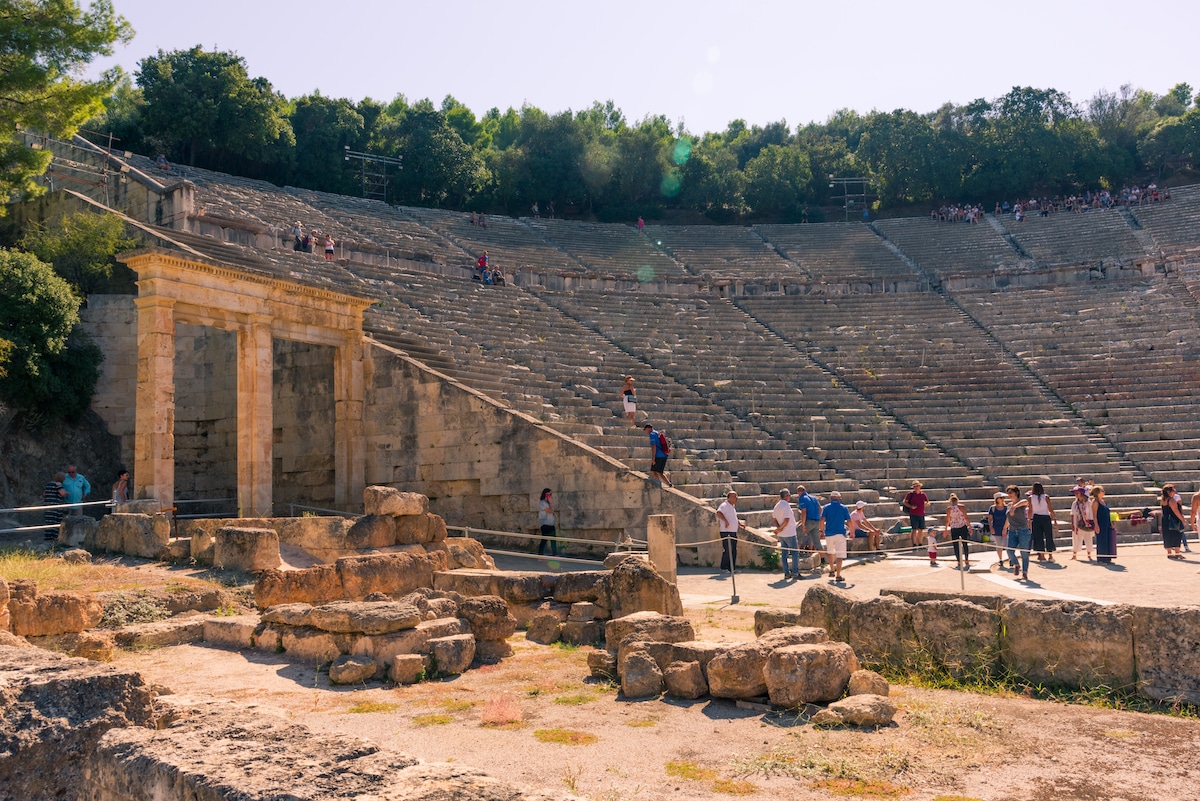
Great Theater of Epidaurus in Epidaurus, Greece (Photo: Stock Photos from Zina Seletskaya/Shutterstock)
Temple of Hephaestus

Temple of Hephaestus or Hephaisteion in Athens, Greece (Photo: Stock Photos from isidoros andronos/Shutterstock)
The Temple of Hephaestus is dedicated to both the god of fire, Hephaestus, and the goddess of pottery and crafts, Athena. It is also the best-preserved temple of ancient Greece and was built according to the Doric order. Though it is older than the Parthenon, some of the same craftsmen and architects worked on both.
The ancient temple also spent some time as a center for Christianity when it was converted to the Church of St. George in the 7th century CE. It remained this way until 1834 when King Otto converted it into a museum for a hundred years. If you visit today, you’ll be able to walk through an incredibly preserved ancient temple.
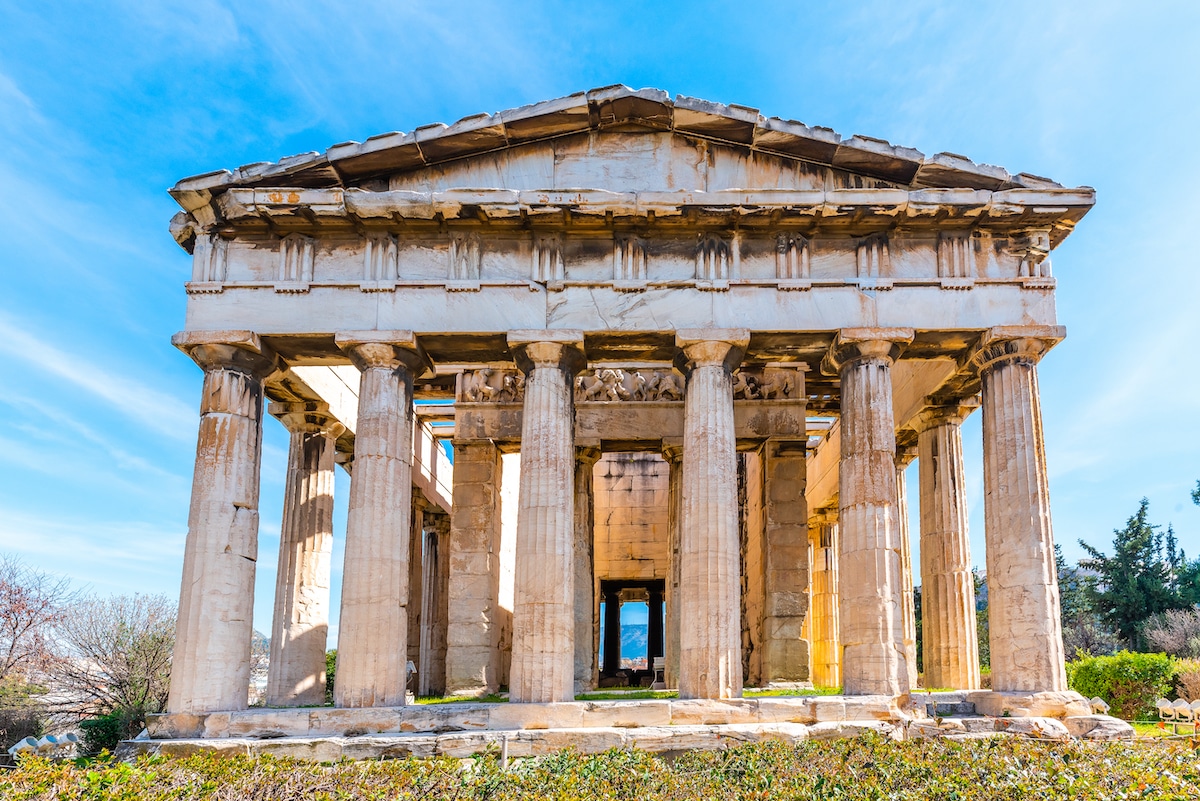
Temple of Hephaestus or Hephaisteion in Athens, Greece (Photo: Stock Photos from Joke van Eeghem/Shutterstock)
